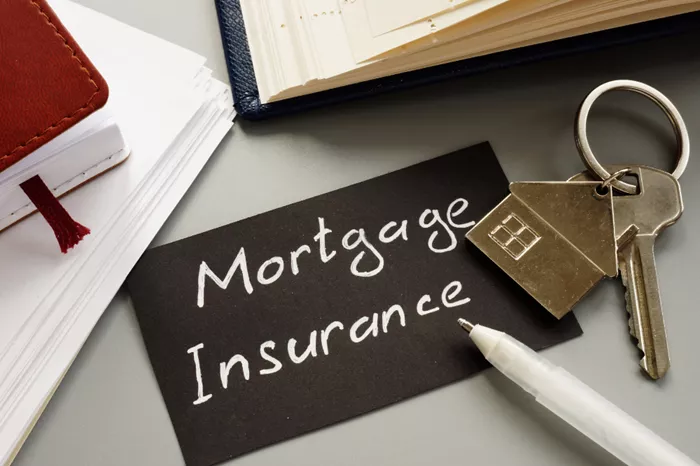Floods are one of the most common natural disasters. They can cause serious damage to homes, cars, and personal property. Many people think they are protected by their homeowners insurance. But the truth is, most homeowners insurance policies do not cover flood damage. This is where flood insurance comes in.
When people hear “flood insurance,” they often think of the government program called the National Flood Insurance Program (NFIP). But there is another option. It is called private flood insurance.
What is a private flood insurance policy and do you need one? In this article, we will explain what a private flood insurance policy is. We will look at how it works, how it compares to government-backed flood insurance, and whether it might be right for you.
What Is Flood Insurance?
Flood insurance is a special type of insurance that protects your property against damage caused by flooding. A flood is different from water damage caused by a burst pipe or a leaky roof. Flooding usually happens when water overflows from a lake, river, or heavy rainstorm and covers normally dry land.
Flood damage can be very expensive. Just one inch of water in your home can cause thousands of dollars in repairs. That’s why flood insurance is important for homeowners, renters, and business owners who live in areas with flood risk.
What Is Private Flood Insurance?
Private flood insurance is a flood policy that is provided by a private insurance company instead of the federal government. These companies offer coverage for flood damage just like the NFIP does, but there are some key differences.
Private flood insurance has been around for years, but it has become more popular recently. This is because private companies are now offering more choices and sometimes better prices than the NFIP.
How Does Private Flood Insurance Work?
A private flood insurance policy works just like any other insurance. You pay a monthly or yearly premium, and in return, the insurance company agrees to pay for certain flood-related damages if they happen. You will have a deductible, which is the amount you must pay out of pocket before the insurance kicks in.
When you buy a private flood insurance policy, you will get a list of what is covered and what is not. It may include your home’s structure, the contents inside, and even additional living expenses if you have to move out while repairs are made.
Each company may offer different types of coverage. Some offer more than the NFIP, while others offer similar protection. That’s why it’s important to read the policy carefully and ask questions before you buy.
What Does Private Flood Insurance Cover?
Private flood insurance can cover a wide range of damages. These may include:
The structure of your home
Electrical and plumbing systems
Furnaces and water heaters
Appliances such as refrigerators, ovens, and washers
Carpeting and flooring
Walls and ceilings
Personal belongings like furniture, electronics, and clothing
Temporary housing if you cannot live in your home due to flood damage
Some private policies also cover things that the NFIP does not. These may include:
Basement improvements
Swimming pools and outdoor property
Detached garages or other buildings
Higher coverage limits
Always check your policy to see exactly what is included. Every policy is different.
What Is Not Covered by Private Flood Insurance?
Even though private flood insurance can offer more coverage, there are still things that may not be included. These can vary from company to company, but common exclusions are:
Damage from poor maintenance or neglect
Earth movement like landslides or sinkholes
Mold, unless it was caused directly by the flood
Vehicles (which are usually covered by auto insurance)
Again, it is important to review the policy and ask the insurer if you have questions.
Who Offers Private Flood Insurance?
Private flood insurance is offered by many different insurance companies. Some are well-known national providers. Others are smaller companies that specialize in flood coverage.
You can usually get a quote from an insurance agent or directly from the company’s website. Some private flood insurers work with banks and mortgage lenders to make sure the policy meets federal requirements.
Not all private insurers operate in every state, and some may not cover homes in high-risk flood zones. So, availability can vary depending on where you live.
How Does Private Flood Insurance Compare to the NFIP?
There are some big differences between private flood insurance and NFIP policies. Here are some of the most important:
Coverage Limits: The NFIP has a limit of $250,000 for homes and $100,000 for personal items. Private flood insurance often offers higher limits.
Waiting Periods: NFIP policies have a 30-day waiting period before they become active. Some private insurers offer shorter waiting periods, even as little as 10 days or immediate coverage.
Availability: NFIP policies are available everywhere in the U.S. Private flood insurance may not be available in all areas, especially high-risk zones.
Pricing: NFIP prices are set by the government. Private insurers set their own rates, which means they might be cheaper or more expensive depending on your risk level.
Flexibility: Private flood insurance may offer more flexible options, like additional living expense coverage or customizable deductibles.
Loan Requirements: Some mortgage lenders require NFIP policies for homes in certain flood zones. However, more lenders are starting to accept private flood insurance if it meets certain standards.
Do You Need Private Flood Insurance?
Whether or not you need private flood insurance depends on your situation. Here are some things to consider:
Location: If you live in a high-risk flood zone, your mortgage lender may require you to have flood insurance. In that case, you may choose between NFIP or private coverage, depending on what is allowed.
Home Value: If your home is worth more than $250,000, you might want extra coverage. Private insurance can help fill the gap.
Policy Options: If you want more flexible or faster coverage, private flood insurance may be a better choice.
Cost: It’s a good idea to compare costs between NFIP and private options. You might find a better price with more coverage from a private insurer.
Can You Replace an NFIP Policy with a Private One?
Yes, in many cases you can switch from an NFIP policy to a private one. However, you must make sure the new policy meets your mortgage lender’s requirements. It’s best to talk with your lender before canceling an NFIP policy.
Also, be careful about timing. You don’t want a gap in coverage. Make sure the new private policy starts before the NFIP one ends.
Some private insurers also offer “excess flood insurance,” which adds more coverage on top of an NFIP policy. This can be a good option if you need higher limits but want to keep your NFIP base policy.
What Should You Look for in a Private Flood Insurance Policy?
Before buying a private flood insurance policy, take time to compare your options. Look at:
Coverage limits: Does it cover enough to rebuild your home and replace your belongings?
Exclusions: Are there any surprises in the fine print?
Cost: What is the premium and deductible?
Waiting period: How soon will the policy become active?
Reputation: Is the insurer reliable and financially strong?
You may also want to ask your insurance agent for help. They can explain the pros and cons of different policies and help you choose the right one.
Is Private Flood Insurance Safe?
Some people worry about private flood insurance because it is not backed by the government. What if the company goes out of business? Will they still pay claims?
This is a fair concern. To reduce risk, choose an insurer that is highly rated by independent rating agencies like A.M. Best. These ratings show how stable and reliable a company is.
Also, many private flood insurers are backed by reinsurers. These are large companies that help spread the risk. So even if there is a big flood, they are more likely to pay claims.
What Happens If You File a Claim?
If you have a flood and need to file a claim, the process is similar to other types of insurance. You will contact your insurance company, provide photos and information about the damage, and meet with an adjuster.
The insurer will then determine how much they owe based on your policy. If everything is approved, they will send you payment to begin repairs or replace damaged items.
Make sure to document everything and keep receipts. This will help speed up the claims process.
Is It Worth Getting Private Flood Insurance?
Private flood insurance can be a smart choice for many people. It offers more coverage, faster service, and sometimes better prices than the NFIP. But it also depends on your home, your location, and your needs.
If you live in a flood-prone area, it is worth exploring both NFIP and private options. Getting a few quotes and comparing the details can help you make the best choice for your family.
Floods can happen when you least expect them. Having the right insurance in place can give you peace of mind and financial protection when you need it most.
Conclusion
Flood insurance is an important part of protecting your home and property. While many people rely on the NFIP, private flood insurance is becoming a strong alternative. It gives homeowners more options, more flexibility, and sometimes more savings.
Related topic:
Can I Cancel My Flood Insurance Policy at Any Time?





















